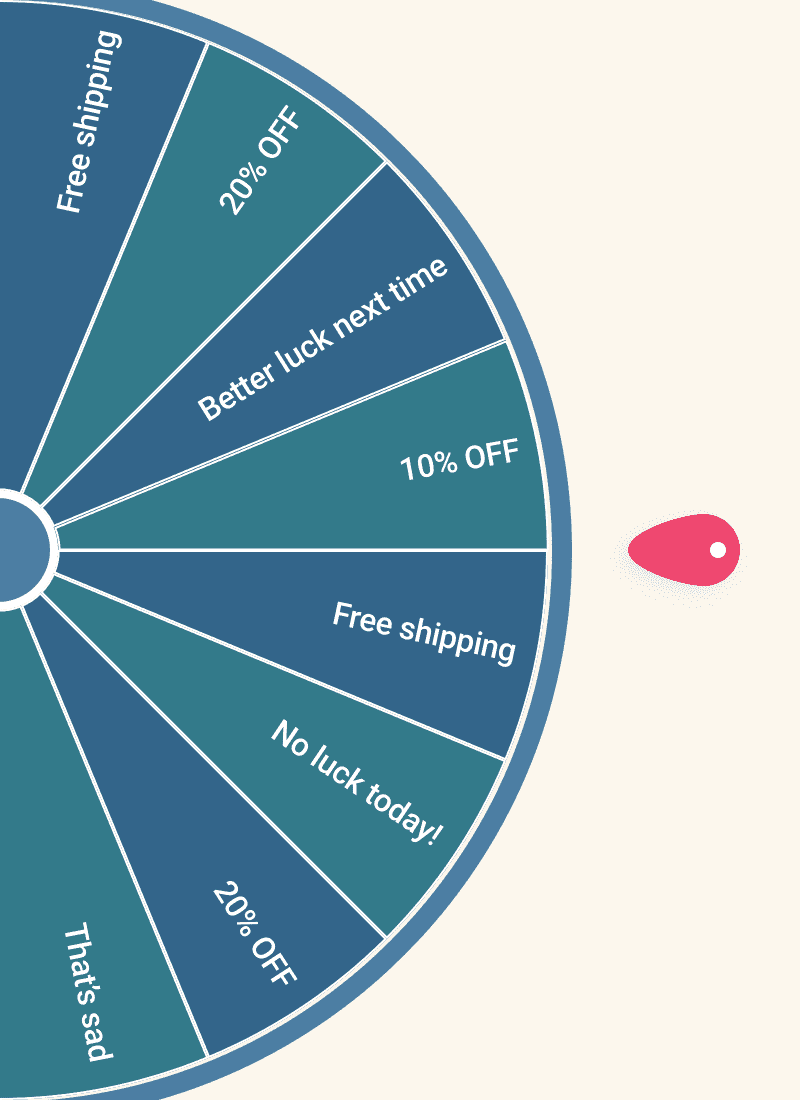Content
- Partner Benchmarks
- Accurately compare campaign and network performances
- To enhance and optimise your remarketing efforts, use mobile attribution analytics
- Tracking methodologies
- Mobile Attribution Explained
- What are the key skills and competencies for mobility management professionals in the future?
- How do you integrate your mobile device policy with your other IT policies and systems?
You have a gaming app and want to run a campaign with a limited time offer. You also want to see how a new network, Network B, can drive in-app events within one week post-reattribution. But when the week is over, you also want to stop crediting Network B with future in-app events. Using Kochava for measurement ensures unbiased attribution across all of your partners. If there is any overlap between your media mix, you can fix it to maximize your unique reach. Attribution is the identification of a set of user engagements that contribute in some manner to a desired outcome and then the assignment of a value to each of these events.
"MarTech Landscape: What is predictive advertising?
The combination of big data and machine learning enables advertisers to efficiently expand their targeting efforts."https://t.co/Dd9KatGhPJ#Analytics #Attribution #Unliche— Unliche Analytics (@unliche_mobile) June 18, 2018
This information is valuable if you want to know how your touchpoints work together to influence a decision to buy. It can lead to sub-optimal decisions if marketers put too much emphasis on driving last-click conversions. Much of what we’ve demystified thus far in this series has to do with marketers reaching the best users.
Partner Benchmarks
Attribution creates an understanding of what happens when a user interacts with a mobile ad. The rule of seven interactions potentially holds more importance in a mobile landscape, where https://xcritical.com/ consumers become distracted more easily during browsing. Multi-touch attribution that includes mobile shows the combination of platforms, creative and frequencies leading to conversions.
- This was the superior investment if more people from campaign B wind up completing in-app purchases – or perhaps land you some large ad whales.
- By understanding which messages are most effective at acquiring new users, you can focus on creating more effective customer engagement programs.
- Prove a campaign’s effectiveness across the sales funnel and calculate ROI.
- Estimates on revenue are based on the price in the supply chain at which the Mobile Attribution Software are procured by the companies.
- Regardless of which technologies Apple and Google allow and enable, Singular will still be able to provide mobile attribution that helps marketers understand how their ad campaigns performed.
- Marketers think of marketing attribution in terms of tracking engagement on web browsers and mobile devices.
Mobile attribution also helps mobile app developers and companies determine how users are interacting with apps and mobile ads. This information can then be used to optimize marketing campaigns, the user experience of an app, and more. Another challenge to ensuring safe attribution is that the mobile ecosystem has various operating systems, for example, iOS what is mobile attribution and Android, so marketers must deal with the specifics of each of them. It’s important to employ versatile mobile attribution platforms or an attribution provider that supports various mobile systems and gives you an eagle-eye view of your data. If you’d like to learn more about mobile app attribution, take a look at our beginner’s guide to the term, here.
It counts more than just the first click or the last, but every touchpoint across the customer’s journey. As we’ve seen, mobile attribution is an important part of your overall ASO strategy. By investing in an attribution tool like the ones listed above, you’ll be able to learn who your customers are, where they’re coming from, and why they respond to some ads and not others. By understanding and applying the right models to app marketing, we can start understanding where our users are going, and why.
Mobile marketing attribution can also improve customer loyalty and engagement. By understanding which messages are most effective at acquiring new users, you can focus on creating more effective customer engagement programs. Branch offers several tools as an MMP – including an engagement builder, SKAN support, fraud protection, and cost aggregation. They also have a “SafeTrack” feature, which helps remove the burden of privacy compliance from marketers. Device fingerprinting connects a user from click to app install by extracting basic and imperfectly unique information from device headers, such as the IP address.
Accurately compare campaign and network performances
How to choose the best attribution tool for your business, based on your role, company size, and objective. When done correctly, mobile attribution can help you better understand which campaigns are driving results and convert those insights into better-performing future campaigns. This issue will only likely increase with the upcoming rollout of Apple’s AppTrackingTransparency framework, which changing how apps can track user activity. Some people don’t like this change because it restricts what apps can do.

The primary elements of engagement are impressions, clicks, installs, and events. Each element has specific criteria which are then weighed to separate winning engagements from influencing engagements. This model is not technically possible to implement without a network that collects and provides view-through figures .
To enhance and optimise your remarketing efforts, use mobile attribution analytics
Linear attribution is a multi-touch attribution method that allows marketers to assign equal value to every interaction a brand has with a user or customer, whether big or small. However, this leaves marketers unable to identify which channels are most successful and least successful, as it doesn’t specify the varying impacts of the different marketing channels. With the Attribution app, you can see detailed user history across multiple devices, data on ROAS by cohort and unattributed journey to conversion.

Ultimately, the goal of mobile attribution is not to tell you what happened, but to provide insights on what to do to make more of what you want to happen, actually happen. If you prefer to diversify your marketing across channels, you can look at costs per channel and make informed decisions on how to allocate your total budget. Since there are so many potential actions to take, more information about what’s happening at each funnel stage lets us know what’s truly going on and what tweaks might be possible. The readers in the section will understand how the Mobile Attribution Software market scenario changed across the globe during the pandemic, post-pandemic and Russia-Ukraine War. The study is done keeping in view the changes in aspects such as demand, consumption, transportation, consumer behavior, supply chain management, export and import, and production. The industry experts have also highlighted the key factors that will help create opportunities for players and stabilize the overall industry in the years to come.
Tracking methodologies
To effectively navigate the complexities of cross-device attribution, marketers must adopt a strategic and pragmatic approach. Although it requires careful planning, cross-device attribution is a powerful technique for mobile analytics and optimization that can increase mobile marketing performance and customer satisfaction. Despite its many benefits, it’s important to acknowledge that there are real challenges with mobile attribution. That’s why Adjust is here to simplify the process and walk through your marketing journey as a partner in measurement.
It’s a simple tool that helps you see where your conversions come from, i.e., their source. What’s great is that you can see the entire user journey across all channels and devices, while preserving user privacy. While B2B commonly performs omnichannel marketing, B2C is less diverse here. So in the first case, the linear attribution model can be the clue, and for B2C, the last touch concept should make sense. Your mobile attribution tools and model should be tailored for your business type.
Mobile Attribution Explained
However, ATT, and SKAN have wreaked havoc on the mobile marketing industry. Apple informed app developers that “fingerprinting,” a probabilistic attribution mechanism, is prohibited unless users give specific authorization. However, the future attribution mechanism on iOS will be powered, at least partially, by SKAdNetwork, a privacy-preserving deterministic architecture for mobile app install attribution. Firstly, you will need to weigh the pros and cons of each attribution model by asking yourself what marketing goals you want to achieve. In most cases, you would like your marketing campaign to generate leads, drive conversion, and create strong brand awareness.
It helps businesses understand the effectiveness of their marketing campaigns. When customers interact with a brand’s app or website, their actions are tracked and recorded. This information is used to identify the marketing channels that generate the most conversions. This provides a more accurate understanding of customer behavior, which businesses can use to optimize their campaigns for better results.
What are the key skills and competencies for mobility management professionals in the future?
Mobile attribution is a little bit of a muddled web, but that doesn’t change the fact that it is a crucial addition to any mobile marketing stack. If you’re putting most of your spend into video ads, for example, you need to know if that’s actually where your user base is coming from. Attribution is the only way mobile marketers can inform decisions in order to optimize their marketing spend. Attribution tracking, or attribution modeling, provides a framework for analyzing which marketing channels receive credit for those conversions.
Attributing sales and conversions to the correct channels is essential for effective mobile marketing. If you want to improve your mobile marketing strategy, mobile attribution is a topic you shouldn’t overlook. It takes some time and consideration to find the right attribution partner, especially considering there are so many options and there isn’t a single standard in the mobile marketing space. But finding a partner that will help you attribute your marketing spend to tangible results can mean everything for the success of your app. For B2C mobile marketing, last-touch attribution is generally the most popular attribution method because you’re paying for the last touchpoint right before an install.
Segment makes it easy for you to send the attribution data across your entire customer stack, including for identity resolution. With those considerations in mind, we plotted out a few of the most popular attribution tools on this graph based on their number of integrations and the number of devices. At a minimum, your attribution tool should have an API that integrates with your CRM, email provider, online ad platforms, and SEO tools. Make sure it has more integrations than you need right now so it can accommodate your team as your business grows. Before we dive into the attribution tools themselves, let’s take a step back to learn a bit about what they are, what they do, and where they fit within the larger marketing tech stack. The U-shaped attribution model is a popular way to attribute credit across the buyer’s journey.
Understanding Mobile Lead Attribution Platforms
For example, if a customer does a lot of their research online but then buys something in a store, the store may not get any credit. This also fails to give credit to the essential interactions that may have happened early in the customer’s journey. For example, if a customer were initially acquired through an organic search campaign but then converted through a paid search campaign, this model would give all the credit to the paid search campaign. Ad Tech Deconstructed series where we break down specific parts of the mobile advertising world to help you get started advertising or monetizing your apps. The world of ad tech can be confusing—that’s why we’re bringing you our Ad Tech Deconstructed series. We’re putting ad tech under a microscope to examine exactly how things work.
By working with Adjust, you can understand media performance across multiple channels. Adjust clients can track their marketing channels and aggregate conversion data for in-depth analysis – whether that’s via click or impression. You’ll always know which ads delivered which users, along with useful contextual information such as which campaign creatives those users saw. On the backend of this interaction, when the user clicks on the ad, that click is measured and reported back to the advertiser’s mobile measurement partner .

